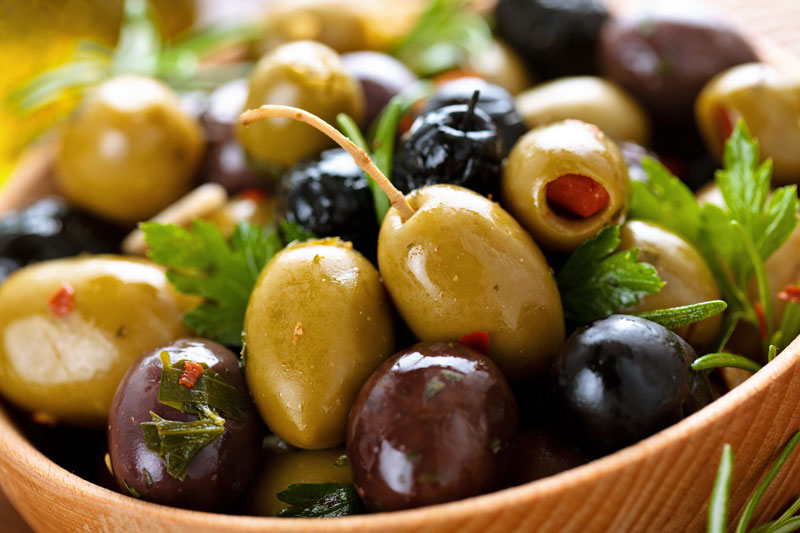
Discover the world of mindful eating – from what it is to how to do it – with the guidance from health and wellbeing author Holly Fielding.
Mindful eating is about taking your time to appreciate food – as well as being one of the first steps in learning how to be more mindful in general. Here, health and wellbeing author Holly Fielding shares her personal experiences with mindful eating – looking at what it is, how to do it and how it could change your life.
It’s easy to think of mindfulness as a different word for meditation – but it’s so much more than that. It’s about taking a breather, focusing on the present, and completely clearing your mind. Something I – and I’m sure many of you – struggle to do between picking the kids up from school and last minute work meetings.
One of the first exercises for beginners is mindful eating. It’s a simple task, but it reveals how much we miss in everyday life. How often do you eat chocolate and notice how it softens and slowly melts, how it feels on your teeth and tongue?
I started practising mindfulness about seven years ago, after I went to a workshop. Since then, I’ve co-authored research papers and run my own mindfulness classes.
And each course starts with a piece of chocolate.
What is mindfulness?
Mindfulness involves achieving a calm state of mind by focusing on the present to become aware of something and appreciate it.
The practice isn’t anything new, but is an ancient concept born in Eastern culture, with strong ties to Buddhism – mindfulness is one of the religion’s 37 factors of enlightenment.
You’ll have no doubt seen books on mindfulness lining the shelves of stores for a few years now. It’s blossomed in the West over the past few years.
Mindfulness gives me the freedom to focus on one thing and really enjoy it – rather than trying to multi-task every minute of the day. And yes, you do have time to stop, to close your eyes, to think. Once you’ve experienced that feeling of calm, that half hour for yourself each day will be sacred.
What is mindful eating?
Mindful eating is a branch of mindfulness, which involves focusing your attention and senses on enjoying your food. It’s not just about the flavours, but appreciating the textures and smells, too.
At its most basic level, it’ll help you really enjoy your meal, rather than just eating for necessity – and who wouldn’t want that? But on a grander scale, it’s an easy way to start practising mindfulness.
I’ve found I enjoy my food more, I eat more healthily and selectively, and I’m more appreciative of the meals I eat on a daily basis.
I’ve tuned into flavours, so I tend to use less salt for seasoning, and I’m more aware of the foods that don’t make me feel good, which means I can avoid them. Most of all though, I really enjoy mealtimes – more than I ever have before.
A step-by-step guide to mindful eating
There’s more to eating mindfully than the chomping itself. Here’s how I incorporate mindful eating into my daily life:
1. Plan your meals
Don’t snack for the sake of snacking. Planning a week full of delicious breakfasts, lunches and dinners means I lose interest in grazing, because I feel so much more satisfied after each meal and – just as importantly – know what the next one will be.
2. Keep food out of sight
“Out of sight, out of mind” is a cliché, but it holds true for mindful eating. Make full use of your cupboards, avoid leaving food out on the side and clear up leftovers straight away. If it’s not readily available, you’re less likely to want it.
3. Make it feel like an occasion
You might think mindful eating means sitting alone in a room with a raisin – but it can be very sociable. Eating out or cooking for friends feels like a treat, making it easier to savour and notice those flavours and textures, especially as you’re likely to comment on them and be slowed down by conversation.
4. Switch off any distractions
This takes 10 seconds. Turn off the TV and put your phone in another room. They distract you more than you realise. Peace and quiet allows you to concentrate on being mindful when you’re eating – and it’s more conducive to after-dinner conversation too. A little background music is fine.
5. Serve smaller portions
Listen to your body and only eat as much as you need to. Start with a smaller portion to tune in and feel when you’re full. Still hungry? You can go back for seconds, although you’ll usually find you don’t need to.
6. Feast your eyes
Just look at that food – no, really look. Isn’t it incredible? Look at the seeds embedded on the shiny, juicy, red flesh of strawberries, and how those roast potatoes are so fragile and fluffy inside. Take it all in before your first bite.
7. Enjoy the smells
An estimated 95% of taste comes from smell, so take note of your nose whether you’re preparing, cooking or eating. Take a curry, for example. You could easily make a curry paste in a blender – but if you’ve got time to make one using a pestle and mortar, squeezing, scraping and grinding those flavours out, you’ll be overwhelmed by a wave of smells, as lemongrass fibres are broken down, and garlic is squeezed down to a pulp.
8. Chew each mouthful well
Take time to chew. Wait until all the flavours have been released, and don’t gulp huge mouthfuls down to save time. As you’re eating, think about the different flavours your taste buds are enjoying. You’ll notice things like the numbness of black pepper, the cleansing refreshment of tomatoes, or bread gradually becoming sweeter as the enzymes in your spit break down the starch into sugars.
9. Put your cutlery down
You’re not an on-guard Buckingham Palace Beefeater – you’re just an eater. So put your knife and fork down when you’ve taken a mouthful. It’ll help you feel more relaxed, enabling your mind to focus on the food you’re enjoying. Eating mindfully can come a lot more naturally when you’re not poised for the next bite.

Top 10 foods for mindful eating
All food is worth taking time over, but here are some of my favourites that I love to savour– think about all the smells, flavours and textures.
Dark chocolate. That moment when the solid chocolate chunk starts to melt on your tongue, becoming silky and smooth – delivering a rich taste bursting with cocoa.
Apples. There are so many apple varieties, but it’s hard to beat a Granny Smith. The sound of the crunch as you bite into the white, juicy flesh, and the sweet, zingy flavour.
Yogurt. Creamy, cold and deliciously thick, a spoonful of natural yogurt like skyr is one of the most refreshing things you can eat, cleansing your palette as it rolls across your taste buds.
Coffee. Take time to make fresh coffee. Grind fresh beans, listen to the muted bubbling of a percolator, and savour each sip, picking out the creamy, sweet and bitter combo.
Peanut butter. Chunky is best. A blob of peanut butter on top of a juicy slice of apple is a real treat – not only for flavour, but for the mixture of textures and sensations.
Fresh bread. It has to be one of the most desirable aromas in existence. The crunch of the crust, the light and fluffy centre. Pure bliss.
Tangerines. Citrus fruits are a mindful eater’s dream. Note the little jets of juice released from the radiant skin as you peel them, and how each small segment is bursting with sweet juice.
Olives. Green or black, fresh and glistening olives are a flavour kick. They’re bitter and sharp, a powerful flavour sensation that leaves your taste buds tingling.
Green tea. There’s almost a floral smell with green tea. There’s joy to be had in its preparation – a quick brew means a light, refreshing flavour, while a longer one brings out the bitter tannins.
Strawberries. Waxy in appearance on the outside, with sweet, juicy flesh on the inside, strawberries are one of our favourite summer fruits. Pick your own from a local farm – or your own garden – to really appreciate each one.
Eating mindfully involves thinking about where your food comes from, how it grows, how to prepare it, how to serve it, how you eat it. It’s about loving food, too. Think of any communal event from any culture around the world, and food will probably play a central part.
So take your time, put your knife and fork down, and enjoy every mouthful.